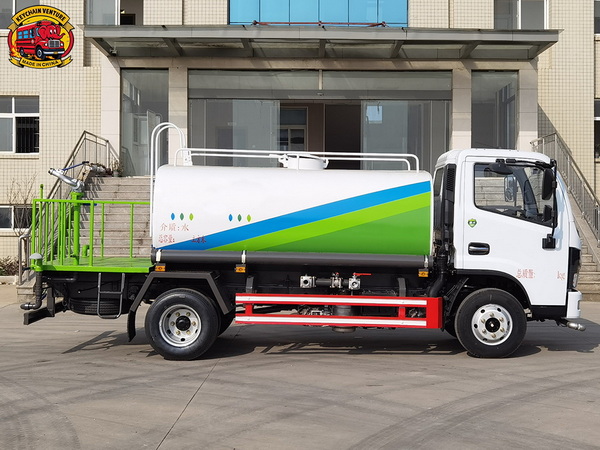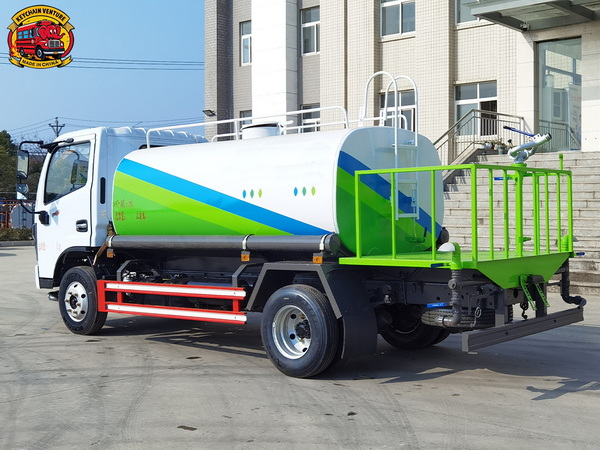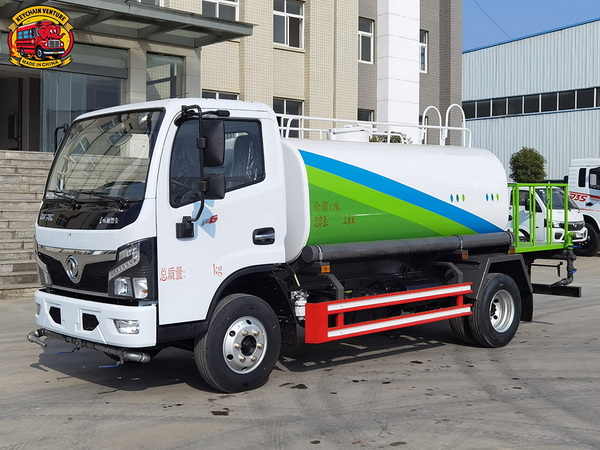Views: 222 Author: Amanda Publish Time: 2025-10-20 Origin: Site








Content Menu
● What Are Baffles in Water Truck Tanks?
● Are Water Truck Tanks Always Baffled?
>> Factors Influencing the Use of Baffles
>> Industry Standards and Regulations
● Types of Baffle Designs in Water Truck Tanks
● How Do Baffled Tanks Improve Water Truck Performance?
>> Consistent Water Distribution
● Engineering Considerations for Baffled Water Truck Tanks
● Impact of Water Truck Speed and Driving Style on Tank Safety
● Applications Where Baffled Water Truck Tanks Are Crucial
>> Mining and Construction Sites
>> Agriculture
>> Firefighting
● Maintenance and Inspection of Baffled Tanks
● Choosing the Right Water Truck Tank for Your Needs
● FAQ
>> 1. What does it mean if a water truck tank is baffled?
>> 2. Are all water truck tanks baffled by default?
>> 3. How do baffles affect the handling of water trucks?
>> 4. Can a water truck operate safely without baffles?
>> 5. How often should baffled tanks be inspected?
Water trucks play a crucial role in many industries, from construction and mining to agriculture and firefighting. One essential design feature that often comes up in discussions about water truck tanks is whether they are baffled. This article delves deep into what baffled tanks are, why they matter, and specifically addresses their application in water trucks. Along the way, you will find rich explanations, technical insights, and multimedia resources to enhance your understanding.

Water truck tanks are large containers mounted on commercial vehicles used to transport water for various operational needs. A baffled tank incorporates internal partitions called baffles, which are mounted inside the tank to reduce the free movement of water during transit.
Baffles are typically flat or curved metal plates welded inside the tank. Their purpose is to minimize the sloshing and shifting of water that can destabilize the truck or impact its handling.
- Improved Stability: When a water truck moves, liquid inside the tank tends to shift or slosh, which can lead to a loss of vehicle control. Baffles break the liquid into smaller sections, reducing momentum and enhancing stability.
- Safety Enhancement: By reducing the dynamic forces caused by shifting water, baffles help prevent accidents, especially during sharp turns or sudden stops.
- Structural Integrity: Properly designed baffles can strengthen the tank walls by evenly distributing pressure.
The answer depends on the design and intended use of the water truck. Many commercial water trucks are equipped with baffled tanks, but some smaller or specialized water trucks may not have baffles.
- Tank Size: Larger tanks are more prone to dangerous water movement, making baffles more critical.
- Vehicle Speed and Terrain: Trucks operating on rough terrain or at high speeds benefit more from baffled tanks.
- Application: Firefighting water trucks, dust control trucks, and agricultural sprayers often require baffled tanks for better control and efficiency.
In many places, regulations or best practice guidelines recommend baffled tanks for water trucks over certain sizes to ensure road safety. For example, regulations in mining and construction industries may mandate baffled tanks for trucks exceeding certain tank capacities.
Different manufacturers and applications use various types of baffles, often customized for specific purposes:
- Flat Plate Baffles: Simple vertical or angled plates positioned to limit liquid movement.
- Honeycomb Baffles: Grids or netting that provide multiple flow interruptions.
- Perforated Baffles: Plates with holes to allow limited water flow but restrict wave size.
- Vane Baffles: Curved or sloped plates that direct the water flow inside the tank.

Baffled tanks help keep the vehicle's center of gravity steady, reducing the risk of rollovers and improving driver confidence.
By lessening the water's abrupt sloshing forces, baffled tanks reduce stress on the suspension and chassis.
Often, water trucks need to spray or distribute water evenly. Baffles stabilize the water volume, ensuring more accurate delivery.
Designing a baffled tank requires balancing several engineering factors:
- Baffle Size and Spacing: Too many baffles can restrict water flow and increase tank weight, while too few decrease effectiveness.
- Material Selection: Baffles must be made of corrosion-resistant materials, commonly stainless steel or coated steel, to withstand water plus any chemical additives.
- Welding and Structural Integrity: High-quality welding ensures baffles stay secure even under stress.
- Tank Shape Compatibility: Baffle design varies if the tank is cylindrical, rectangular, or another profile.
Engineers often use simulation software to analyze fluid dynamics inside tanks, optimizing baffling for the specific water truck model and operational environment.
Even the best baffled tank cannot fully compensate for unsafe driving practices. Higher speeds and aggressive maneuvers cause increased water momentum and risk.
- Slow down during sharp turns.
- Avoid sudden braking when the tank is full.
- Drive smoothly on rough terrain.
- Follow manufacturer guidelines regarding maximum safe speeds with full tanks.
These habits complement baffled tank design in maintaining overall vehicle stability.
Large water trucks control dust and provide water for various operations. Baffled tanks help maintain control on uneven, rough roads.
Water trucks used for irrigation or livestock watering benefit from baffles to ensure even water flow and tank stability on farmland terrain.
Water tankers need to move quickly and safely. Baffles prevent splashing that could interfere with vehicle handling during emergency response.
Street cleaning and dust control rely on stable water delivery systems, making baffled tanks essential for efficient operations.
Baffled tanks require regular inspection to ensure baffles remain secure and free from damage or corrosion. Broken or detached baffles can cause dangerous water surges and damage the tank structure.
- Inspect welds and fasteners connecting baffles.
- Check for blockages or debris.
- Clean tank interiors periodically.
- Monitor for cracks or corrosion on baffles and tank walls.
- Schedule inspections after rough terrain use or accidents.
Proper upkeep prolongs tank lifespan and preserves safety features.
When selecting a water truck, take into account:
- Tank size and capacity.
- Presence and type of baffles.
- Intended application (e.g., firefighting, dust control).
- Regulatory compliance requirements.
- Vehicle suspension and chassis compatibility.
Consulting with manufacturers or specialists helps tailor the water truck to your operational needs.
Water truck tanks are often baffled to promote safety, stability, and efficient water handling during transport. Baffles play a vital role in preventing water from sloshing around and destabilizing the truck, especially in large vehicles operating on uneven terrain or at high speeds. Selecting the right baffled tank design can significantly enhance your water truck's performance and safety. Proper design, maintenance, and driving practices ensure that baffled water truck tanks meet the demanding needs of various industries effectively.

A baffled water truck tank contains internal partitions that reduce the movement or sloshing of water inside the tank during transportation.
No, not all tanks have baffles. It depends on the truck size, use-case, and regulatory requirements.
Baffles reduce liquid momentum, making the truck more stable, especially during turns and sudden stops.
Smaller capacity tanks used at low speeds or on flat terrain may operate safely without baffles, but larger tanks typically require them.
Regular inspections should be done at least quarterly or according to the manufacturer's guidelines to ensure safety and integrity.